Much of the contents of this article due to our friends at StopTech
Brake Fluid – what is it, what’s the difference, and which one should you use?
– Updated August 31, 2012 w new vendors and fluids –
Brake fluid is possibly the single most neglected component of the automobile. Most high performance drivers check their tire pressures and change their engine oil at frequent intervals. Virtually no one (including us) ever changes the brake fluid in their street car at the prescribed intervals – or even bleeds the brakes. WRONG!
The function of brake fluid is to provide an incompressible medium to transmit the driver foot pressure on the brake pedal through the master cylinder(s) to the calipers in order to clamp the friction material against the brake rotors. The foot pressure is multiplied by the mechanical pedal ratio and the hydraulic ratio of the master cylinders, booster (if used) and caliper piston(s).
This is a simple concept. When fresh, all brake fluids are virtually incompressible and the system works as well as its mechanical and hydraulic design allows. There can be, however, significant problems in the proper functioning of brake fluid. Overheated brake fluid can (and will) boil in the caliper. Boiling produces gas bubbles within any boiling fluid. Gas is compressible, so boiling brake fluid leads to a soft brake pedal with longer pedal travel. In extreme cases, overheated brake fluid necessitates pumping the brake pedal in order to get the brakes to function at all.
This leads to a discussion of boiling points. Brake fluids are classified by both “dry boiling point” and “wet boiling point”. They are also classified by the US Department of Transportation (DOT) rating, DOT 3, DOT 4, DOT 5, and DOT 5.1.
The U.S. Government specifications for brake fluid (FMVSS 116), do not dictate the chemical composition of a given classification, or “grade” of brake fluid. Instead, FMVSS 116 defines the properties of the fluid, such as dry and wet boiling points (referred to as the equilibrium reflux boiling points, dry and wet), viscosity of the brake fluid grade at certain temperatures, high temperature stability, corrosion characteristics, and the effects of the fluid on seals, as well as other physical properties like the tendency to fell or separate or form sludge and or crystalline deposits. Boiling point and viscosity are the most relevant properties to most consumers, including high performance customers. Viscosity is an important factor for proper operation of ABS and Active Handling Control system on modern vehicles since in most cases the pressure and volume of fluid transferred is not measured. Instead, flow through a valve with a given orifice size over time are the control mechanism, so fluid viscosity is a key characteristic.
DOT 3 fluids are usually glycol ether based, but as stated earlier, that is not because they are required to be. The brake fluid industry has determined by consensus that glycol ether fluids are the most economical way to meet the requirements.
By definition, DOT 3 fluids must have a minimum dry boiling point (measured with 0 percent water by volume) of 401 F and a minimum wet boiling point (measured with 3.7 percent water by volume ) of 284 F. The specification says little more as far as the performance enthusuiast is concerned.
DOT 4 fluids are also glycol ether based, but have a measure of borate esters added for improved properties including increased dry and wet boiling points. A seldom talked about characteristic is that because of this chemistry, the DOT 4 fluid will have a more stable and higher point during the early portion of its life, but ironically, once the fluid does actually begin to absorb water, it boiling point will typically fall off more rapidly than a typcial DOT 3 fluid. By definition, DOT 4 fluids must have a minimum dry boiling point of 446F and a minimum wet boiling point of 311F.
DOT 4 is the grade applicable to most race engineered brake fluid in the world today, especially with regard to viscosity limit. Note that although the DOT 4 designation has a minimum dry and wet boiling point, a DOT 4 racing brake fluid may have a dry boiling point of over 600F. Its viscosity is challenged, however, to be under the viscosity limit of 1,800 mm2/sec. Some claimed racing brake fluids exceed this important limit. Caution should be exercised if these fluids are used in race cars with ABS systems. This does not mean that DOT 4 fluids are necessarily better than DOT 3 fluids. Remember, the boiling points listed are minimums. There are certain DOT 3 fluids with higher boiling points than some DOT 4 fluids. The real differentiating factor is that DOT 4 fluid should be changed more often than a DOT 3 fluid because of the effects and rates of water absorption.
The original DOT 5 fluid specification was expected to be fulfilled by silicone based (SSBF) composition. It was designed for use in applications where its resistance to water absorption (and therefore low corrosion) was desired – like in military equipment. It has also found use in antique cars because it does not dissolve paint finishes. With SSBF, unfortunately, these characteristics were only achieved by unacceptable high compressibility. As such, the DOT 5 grade SSBF is of little value to any conventional automotive or high performance application.
Subsequently, there have been non-silicone based fluids developed that meet DOT 5 wet and dry boiling point specifications and viscosity requirements. They are referred to as DOT 5.1 grade fluids. As a special case they are listed here for completeness.
Here is a table of most of the leading racing brake fluids, and there boiling points, and price. We will update this table as new versions or new vendors enter the market.
| Brake Fluid info | ||||
| Dry Boiling Point | Wet Boiling Point | Sugg List Price | Size per bottle | |
| AP Super 600 | 310 C | 210 C | $21 | 500ml |
| 590 F | 410 F | |||
| ATE SL | 260 C | 165 C | $13 | 1 Liter |
| 500 F | 329 F | |||
| ATE Super Gold – | 280 C | 198 C | $13 | 1 Liter |
| 536 F | 388 F | |||
| ATE Super Blue – | 280 C | 198 C | $13 | 1 Liter |
| 536 F | 388 F | |||
| Brembo HTC 64T | 335 C | $36 | 500 ml | |
| Endless RF650 | 323 C | 218 C | $44 | 500 ml |
| 613 F | 424 F | |||
| Motul RBF600 | 312 C | 216 C | $19 | 500 ml |
| 594 F | 421 F | |||
| Motul RBF660 | 325 C | 204 C | $32 | 500 ml |
| 617 F | 399 F | |||
| StopTech STR600 | 312 C | 206 C | $17 | 500 ml |
| 594F | 404 F | |||
| StopTech STR660 | 328 C | 206 C | $28 | 500 ml |
| 622 F | 404 F | |||
| Castrol SRF | 310 C | 270 C | $85 | 500 ml |
| 590 F | 518 F | |||
BRracing’s view – first, the normal disclaimer, we have not tested all the fluids listed. And, our testing is from real world experience, not laboratory testing and strict evaluation. But, in track applications, there are just three things that interest us. Compressibility, boiling temperatures (both of them), and related to this, the frequency of needing to do a brake bleed. At first, we thought that all fluids of race quality would be nearly the same. But, we found that not to be the case. We did find that certain fluids really did have a different feel. The steadiness of the brake pedal under hard braking is where we can most feel the difference. In this area, the Endless fluid we have found to be the best. In the next area, boiling point, we have found that most customers think that all are almost the same, but we have found that due to the actual temperatures encountered in the calipers under track conditions, this is not the case. Since the dry boiling point is nearly the temperature found in the caliper under hard braking, a boiling point just above versus just below make a big difference. The difference is noticed in how frequently we have to bleed or flush the brakes. On race teams, where you can’t have any element of compromise, they flush the fluid every day, regardless.
For those that have been with us at the track, they know that we beat the crap out of our brakes. We normally see our brakes smoking like a barbeque pit every time we come off the track. And, our brake temps bare this out as well. If this is not the case for you, then the brake fluid is not as critical an issue. But, as we have evolved and worked w our customers on their track driving, we are seeing this now be the norm rather than the exception. That means we have to pay attention to both dry and wet boiling points when we evaluate brake fluids for track use. The combination of this can be understood relative to the use of the CASTROL synthetic brake fluid by many of the race teams. The fluid offers a very high dry boiling point, but a lower wet boiling point. The lower wet boiling point is not of concern to most of them though, as they flush their brakes after every track day. Most of our customers are not willing to invest in brake flushes after every day (I said most…some are). We have also found for the average track customer, the higher the grade of brake fluid, the less frequently they have to do brake bleeds (take Motul 600 vs Endless….Motul you will do more frequent brake bleeds and flushes, with Endless, less). Those who use Endless can do more track days between flushes.
When we first started racing, we used ATE fluids (Super Blue and Super Gold). However, with the broader diversity of cars we now support, we have stayed away from them. We have found long term issues w the brake master cylinder and the piston seals. We don’t know why, we just know what we have seen.
We have liked the results we have seen recently with the new Brembo and StotTech fluid, but we would choose them when price is the main consideration. We have not found anything better than Endless….and you also have to believe that if Porsche factory teams and most of the F1 grid find this a good fluid, there is reasoning there as well.
But, no matter what you do, choose an upgraded race brake fluid for ALL cars that have track duty. Most customers see this as a lower priority, and it should be one of the first steps in preparing a car for track use. ENJOY your time on the track.
BRracing – performance at the limit.
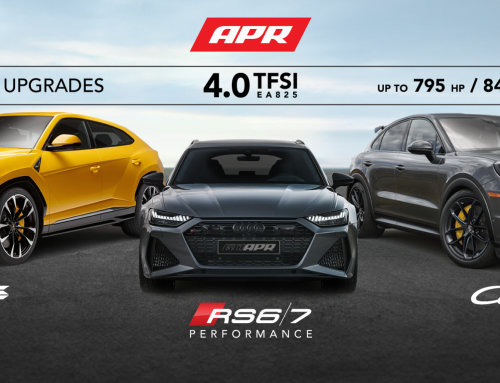
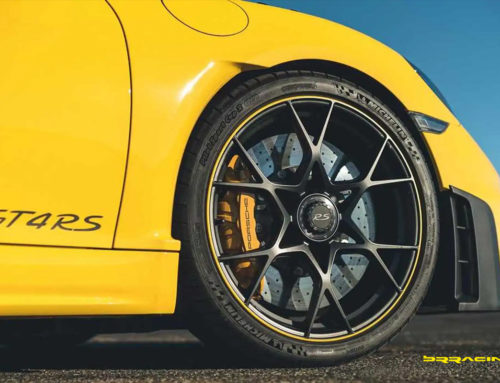
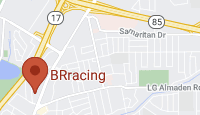
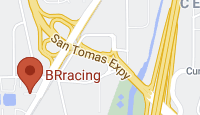
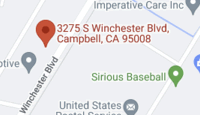
Thanks for this post……….. i agree with your views for break fluid. I use the blue stuff from ATE because it’s really easy to spot in the bleeding hose.
Ferrari Service
Thanks , I’ve recently been searching for info approximately this topic for a while and yours is the greatest I’ve found out so far.
But, what concerning the bottom line? Are you positive about the supply?